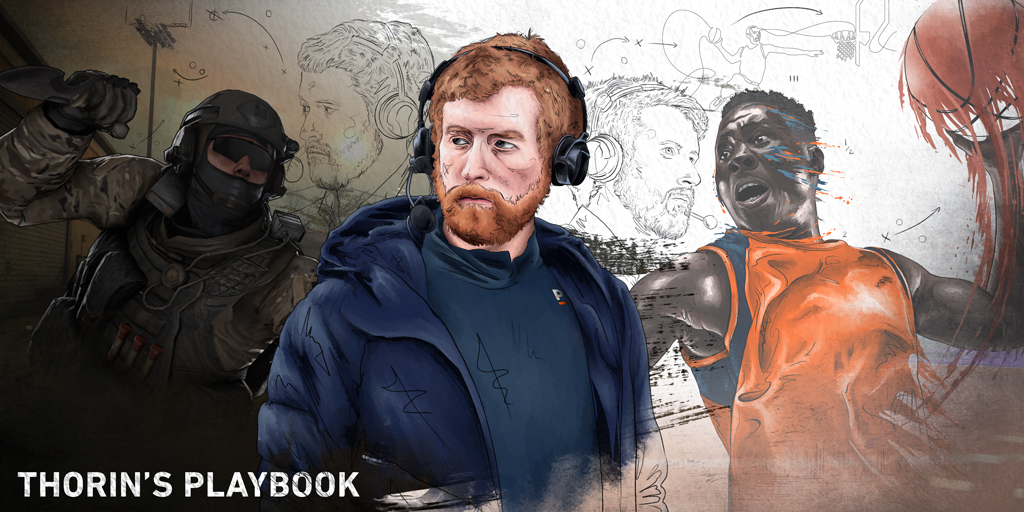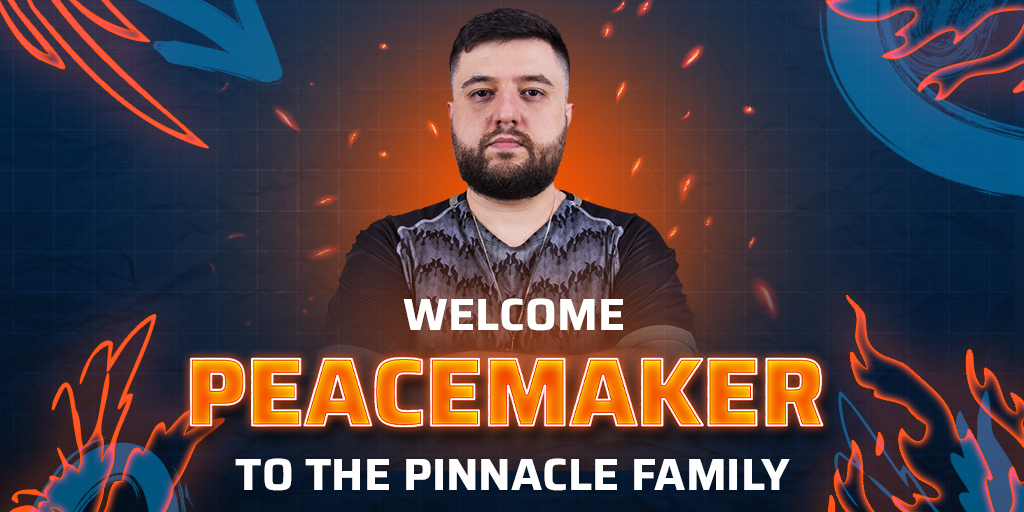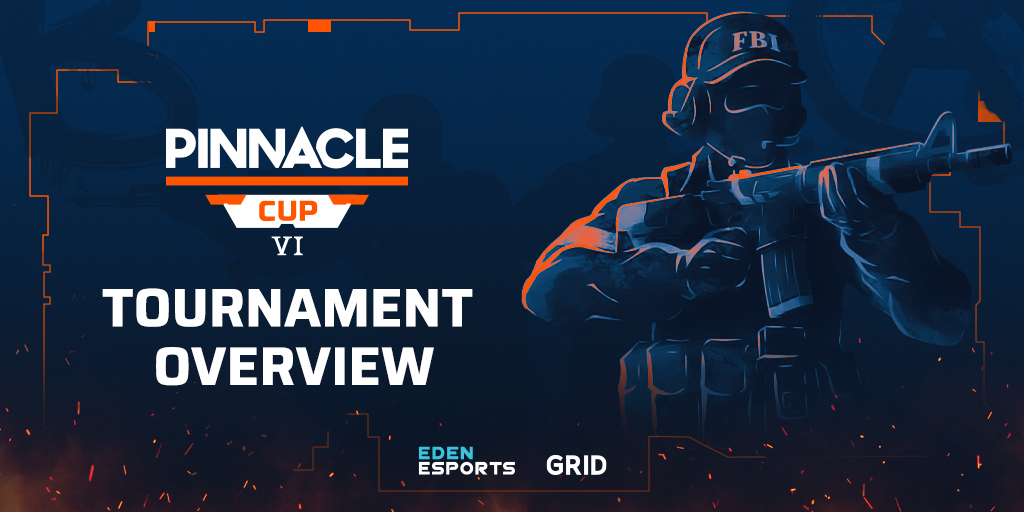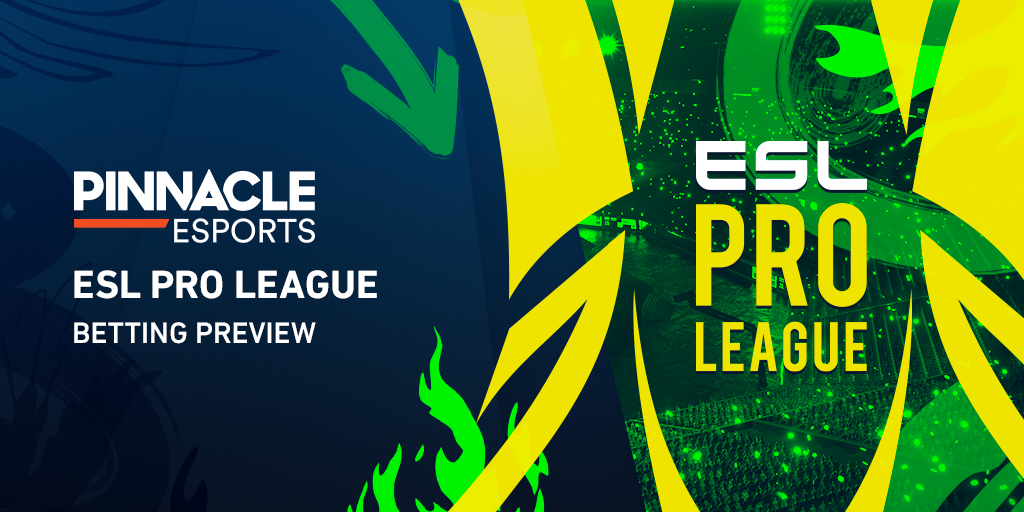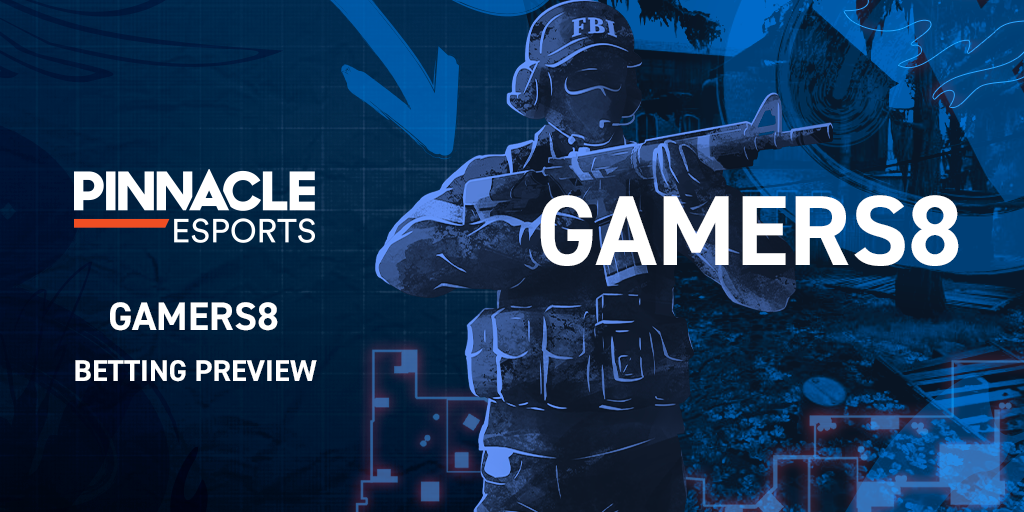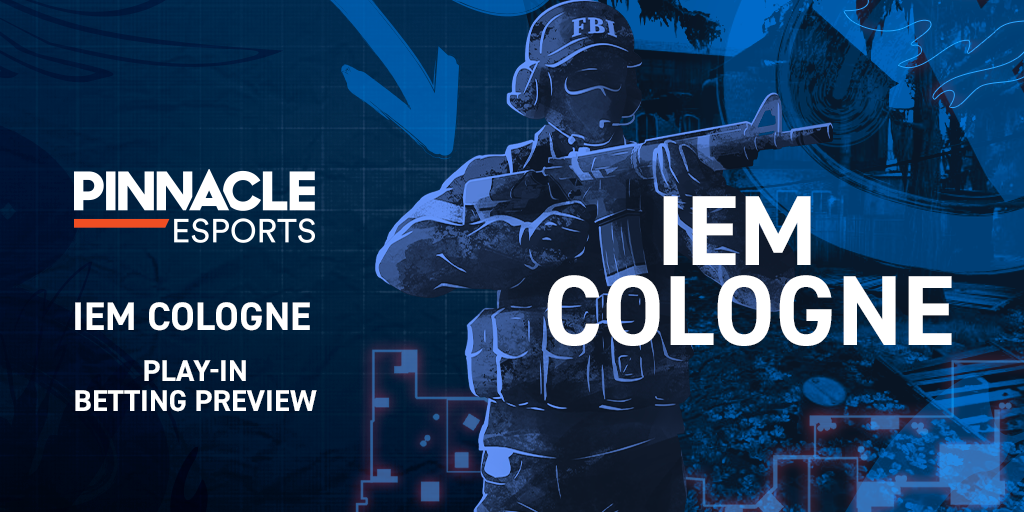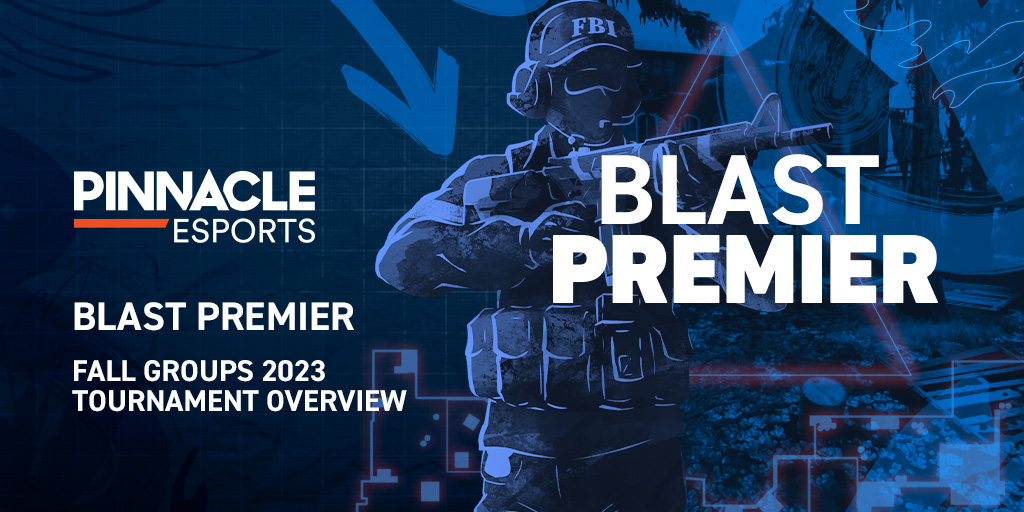Duncan "Thorin" Shields opens his first column for Pinnacle focusing on the hidden depth that exists in both MMA and Counter-Strike, and why so many people become new spectators for both.
Watch a spectacularly violent knockout from Anderson Silva's career or an explosive seemingly inhuman MVP performance of Oleksandr "s1mple" Kostyliev and its instantly obvious why Mixed Martial Arts (MMA) as a sport and Counter-Strike: Global Offensive (CS:GO) as an esport are so easily and rapidly adopted by new spectators. These disciplines check all of the entertainment boxes long before one need consider the styles, strategies and tactics that lie behind the fireworks, as it were.
A philosophy that has defined my work and life has been the notion that "what you get out is based on what you bring to the table." So while these are some of the most thrilling endeavours you can watch on your screen, until you dig a little deeper and become a student of the game you'll only be seeing part of the picture.
If the only MMA fight you can enjoy is a brutal striking war, and the only CS:GO game you can appreciate is a loose and fast-paced brawl, then I'm afraid you're destined to come away underwhelmed at times. Come with me, though, and I'll show you the chess match just beneath the surface that will give you another kind of contest that you can find satisfaction from.
The other side of the coin
In MMA the explosion of the sport saw a number of stereotypes formed. People with no experience of professional fighting and its many disciplines, except perhaps the well-established tradition of heavyweight boxing title fights, discovered a new sport where knockouts were seemingly more common, yet also unpredictable.
Astralis have had Team Liquid in their pocket for so many years because the majority of the team are adept at lurking, only to kill them with the help of the surprise factor.
While these new fans felt the addictive dopamine hit of an epic knockout or submission, they could see no further over the martial arts horizon. These "just bleed" fans wanted violence they understood, and a guarantee of a knockout. Certainly, that is the easiest way to consume MMA initially and is the most obvious surface level reading of the sport.
The downside, however, of the fast-food appeal of MMA was that this kind of fan typically became frustrated when fights were centred around wrestling pressure and takedown defence, or Brazilian Jiu-jitsu (BJJ) submission attempts and defence. It looked to them as if the fighters were avoiding fighting, or scared to engage in our modern day simulacrum of war.
With more exposure to the sport, the great champions from those less obvious disciplines and the constant elevation of MMA commentary and analysis, lead many to now understand that Khabib Nurmagomedov's grinding and smothering wrestling can be as impressive, and terrifying, as an Alistair Overeem knockout that sends his opponent to another dimension. Demian Maia's BJJ canvas masterpieces are works of art as much as Conor McGregor instantly changing the direction of a fight by touching his foe with that lethal left hand is. Still, that intuitive learning curve can be accelerated by understanding how to observe a few fundamental but essential core concepts.
Similarly, the smooth but absurdly consistent AK aim and duelling style of Nikola "NiKo" Kovač immediately appeals to the eye on an aesthetic level, and seems tailor made to be the subject matter of countless highlight movies. The unreal flicks of sniper extraordinaire Kenny "kennyS" Schrub require practically little-to-no understanding to be recognised as entertaining.
In CS:GO we have our own "just bleed" fans and they can be found posting comments demanding their favourite team adds even more raw firepower and star potential, often at the expense of vital supportive elements or team dynamics. One would hope the success of sides like Astralis and ENCE have shown such fans another side to the game, where the brains and communication skills of the competitors are on display in their actions, as much as their mechanical skills and aptitude for aiming.
An impossible "s1mple" no-scope which drags Na`Vi from the point of defeat towards victory, can be matched by a flawless late game execution of a playbook tactic by the mighty Danes of Astralis. The variance-defying spray of Jonathan "EliGE" Jablonowski is not necessarily of more value than the "speed chess" mid-round calling style of Finn "karrigan" Andersen's teams.
Reset the filters and a "boring" fight, where they are just "wrestling around on the floor," becomes a taught, heart-in-your-chest contest where you understand that if this downed opponent yields for a solitary moment they will be brutalised or choked out by Khabib. A "slow" match-up between Astralis and Team Liquid is actually a game-within-a-game that echoes dozens of past meetings and sees the North American cobras, so dangerous a predator to most other teams, wary of when the Danish mongooses will break them.
The brain game
In MMA, it can be easy to imagine a powerful striker is only looking for an opening to land a blow or a skilled ground fighter is simply loading up for a takedown attempt. It is essential, however, to appreciate that the "mixed" part of MMA is a dynamic ever present when these fighters enter the arena.
In CS:GO we have our own "just bleed" fans and they can be found posting comments demanding their favourite team adds even more raw firepower and star potential, often at the expense of vital supportive elements or team dynamics.
A great striker fighting a strong wrestler cannot be as free with his combinations and wing heavy punches without conscience, because he is aware that a miss opens his lower body up to a takedown and potentially the rest of the round struggling to survive in the other fighter's world. As a member of the famous BJJ family, the Gracie family once put it, "The ground is my ocean, I'm the shark, and most people don't even know how to swim."
When the fight goes to the ground with a wrestler in a dominant position it can seem as if there is not much action. "He's just lying on him and the guy underneath isn't even trying to escape" the novice might remark. Wrestling is a sport about moving another man's body against his will and in line with your own. Khabib or Georges St-Pierre will make the other fighter carry their weight the whole time he is on the ground.
Imagine having a large man on your back while trying to stand up, knowing he’ll punch you the second you stop guarding with your hands, or will strangle or submit you if you don't pay very close attention to his body position. Now understand that this can happen to you for 15 to 25 minutes, in intervals, and the whole time you are down there you are seen to be losing a competition that will decide your future earnings.
- Read more: The rise of 6-man CS:GO rosters
It's not as if the best strikers focus only on their strength and don't invest into learning wrestling takedown defence or how to avoid BJJ submissions, but more that their opponents are the best in the world at their crafts. You may know the defences or counters to the major fundamental submissions, such as a leg triangle or arm-bar, but these fighters are grandmasters, while you are simply a good chess player.
The great BJJ players don't move slowly from one transition to another, giving you time to recognise what they are doing and where they are going next. Their hip movement and encyclopaedic experience of past attempts means they can chain together what, to another fighter, would be three or four movements and fluidly roll until they have you mounted or in a threatened position.
Their strength in the submission aspect of fighting can even invert the traditional principle of the fighter on top being at an advantage, with their submissions from the bottom threatening to end the fight quickly if they find an opening. Tony Ferguson became an interim champion thanks to his comfort "on bottom" - a place most other fighters fear to find themselves.
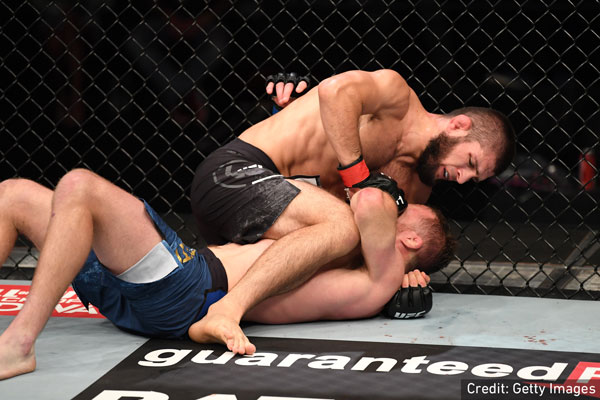
The striking equivalents are to be found in the world of feints and combinations. Precision and set-up are the key concepts here, not how fast or heavy your hands are. The leg kick into a jab, then into a feinted takedown might be what opens up the hands of your opponent, causes him to look down and thus allows an uppercut knockout from nowhere.
It's said by many of the best competitors that while at home you can see the punch coming, from their perspective you just see the opponent twitch his arm or leg and then suddenly the blow has arrived already. No wonder stand-up fights include many feints and twitch movements which yield no attack and thus can seem pointless to the couch potato.
Pain does hurt
When Patrick Swayze's character in the unintentionally hilarious, 80s classic "Road House" uttered the appallingly crafted line "pain don't hurt", he presented a notion of a "tough guy" that exists largely only on the silver screen. Another component of the depth and nuances of MMA, that will elude the casual observer, is how much certain moves which don't appear overly violent or damaging can hurt.
In Khabib's fight against Justin Gaethje, the Russian employed his signature approach of repeatedly covering Gaethje's mouth while they were on the ground. This would deprive, even if only momentarily, the fighter carrying his weight from getting enough oxygen. He would vary this up by repeatedly holding what would be a neck crack in a position on the American fighter's face.
As MMA legend Dominick Cruz was quick to point out from the commentary booth, this was not a move intended to choke or submit him but rather simply to hurt the opponent. Imagine feeling a pressure on your face as if it might break, but knowing onlookers will simply think you wanted a way out of the fight and might tap despite not technically being in danger of going out.
Fans of boxing might be aware of how brutal a liver punch can be, essentially switching off the brain of the opponent by overwhelming it with pain signals, but the most underappreciated simple blow is the leg kick. A leg kick might not look as if it really hurts and certainly fighters do their best to mask their pain and look as though it were a mere passing blow.
But the damage done to the muscles of the leg can not only be painful, but limit motion later in the fight and ultimately put a fighter out of commission for weeks. Just ask Urijah Faber if Jose Aldo's leg kicks hurt.

Repeatedly leg kicking an opponent will often cause them to immediately increase the pace of the fight and either lunge forward with a strong attack or dive into a takedown, such is the pain and the inevitable limitation of movement they represent.
Position is king
In Counter-Strike, the game can be simply broken up into a series of fights or engagements. These are often viewed either as one-versus-one duels between players, or labelled by the numbers represented on each team, i.e. 3v3, 3v4 etc. The core concept to appreciate is that strategical style and specific tactical movements put players into the positions where those fights take place.
"s1mple" is hailed by many, myself included, as the best player in history, yet was beaten on many occasions by Astralis because they fought him as a collective unit and pushed him out of position, and not in a myriad string of one-versus-one fights without utility, where he would have been at an advantage in most instances.
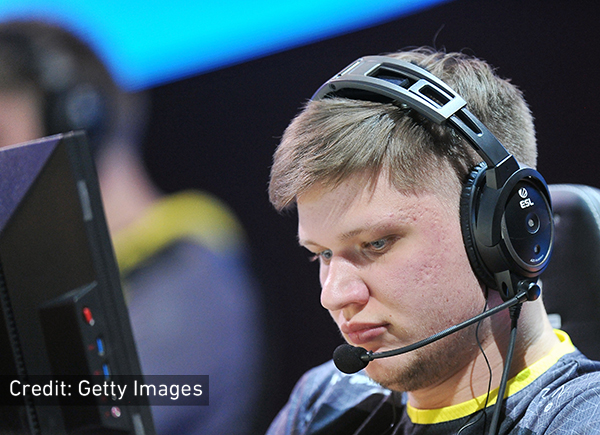
When the T side (the offensive half of the game) attacks the map early on, the players who take up the most advanced positions are not simply looking for fights, but rather attempting to create space for some of their team-mates to follow behind. The initial flash bang and peek out that might sometimes be, in reality, against nobody and look wasted is about taking over territory and securing it, so the rest of the team can transition to the next phase of the tactic or process according to their style.
The better a team is in their team-play and ability to execute, the more it may look as if they throw utility and run out all at once, akin to the seamless transition a skilled BJJ player makes from side control into the mount position.
When those entry players take on a fight they don’t engage in a war of bravado, imagining they'll win every fight with superior aim or brute force. They are entirely aware of their role as advanced position pieces on the chess board. Just as one may sacrifice a pawn to take one of the opponent’s pieces and gain a superior position in chess, they apply the principle of "trade fragging", where your team-mate is waiting to kill or "re-frag" the player who killed you, to remove defensive players and secure specific map locations.
As a general rule in Counter-Strike, a trade of kills benefits the offensive side, as the remaining defensive players will often now be spread even thinner, while still having to defend both sites, since the T side can retreat and decide to strike on the other side of the map if they please. Teams like ENCE and Renegades, later 100 Thieves, used this approach to put up strong T sides against squads considered much more skill-rich and powerful in the killing department.
The impact of the invisible player
Map pressure and utility remaining are, at-times, the invisible factors present in the mind of the opponent and remain a key dynamic in decoding the decision-making of the players on your screen. Astralis have had Team Liquid in their pocket for so many years because the majority of the team are adept at "lurking", where a player waits in an area for an opponent to come into it - perhaps thinking it empty and attempting to move into another part of the map - only to kill them with the help of the surprise factor.
In straight up duels where they know the location of the Astralis player, Team Liquid could prove superior players, but forced to face the uncertainty of where exactly Astralis players were located, and knowing how strong their communication was, meant TL's stars had much more on their minds than simply the angle of their peek or concentrating on aiming when engaged in a big match against their Danish nemeses.
Even if star fraggers find fights with opponents, there are ways and means of evening the odds for those players who are much less mechanically brilliant. With good communication and team play, a team can flash the star off his spot or threaten to trap him with grenades behind him.
Imagine being one of the world's best archers, but now trying to aim and release with someone shining a spotlight back and forth into your eyes and deafening you from behind with a loud sound. Easy to see how that might rattle you, right?
Even if that utility doesn't come immediately, knowing a team is famous for saving it means the same aggressive angles can't be held, otherwise the aforementioned scenario again becomes a reality.
On either side, CT or T, man advantage is a precursor to all kinds of psychological warfare. As someone observing the match, we know where all of the players are and how quickly they can get to each other. The players themselves know only what they've seen, have had communicated, or can deduce. In a numbers disadvantage they cannot watch the same angle as intently, knowing they can be flanked or may need to rapidly rotate to another part of the map.
This invisible pressure is made to weigh upon the minds of opponents and affect their impulses by the great teams. Gabriel "FalleN" Toledo’s SK Gaming team from 2016, who were twice major champions that year, were a side which mastered this core principle to seemingly never lose late round scenarios.
Eyes wide open
With these concepts marinating a little, and some applied effort in looking for them in future MMA fights or CS:GO matches you watch, I'm willing to wager you'll find that an entirely new flavour of contest becomes interesting. Before there was only an exciting or a boring match on an aesthetic level. Certainly, there are still match-ups which will fail to deliver, but now the strategical and the tactical sides of these disciplines begin to blossom and one can enjoy a chess match between the minds, techniques and styles of the competitors.
Go forth and enjoy the mental match these players bring us, along with the action.

